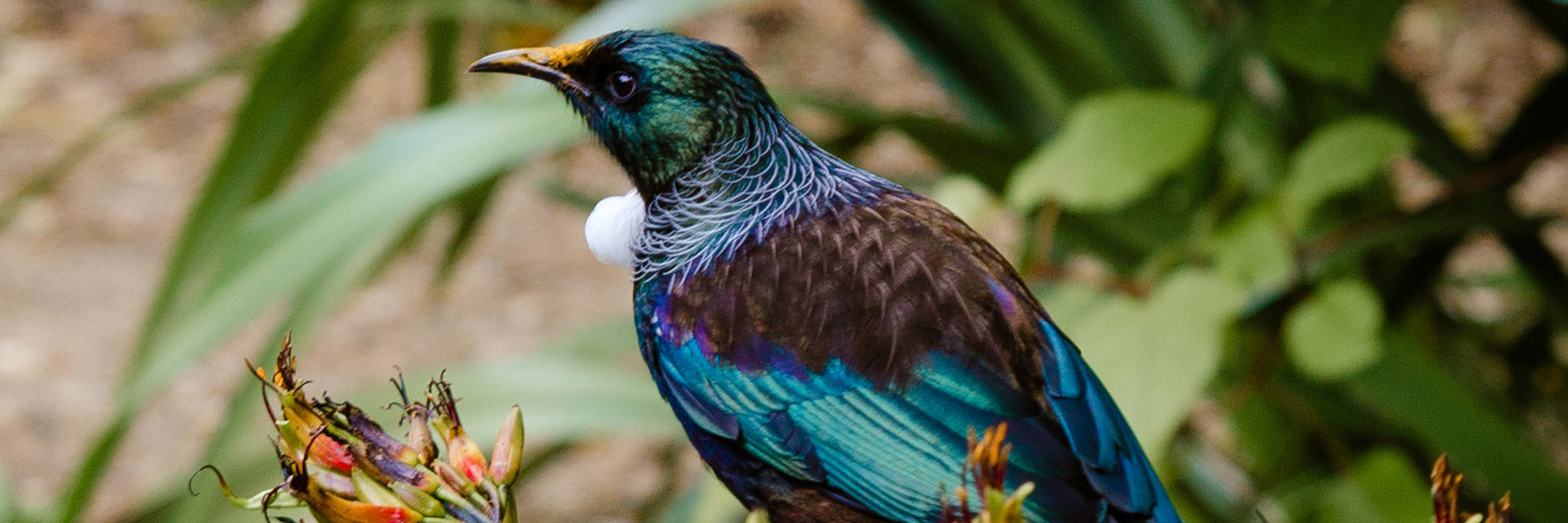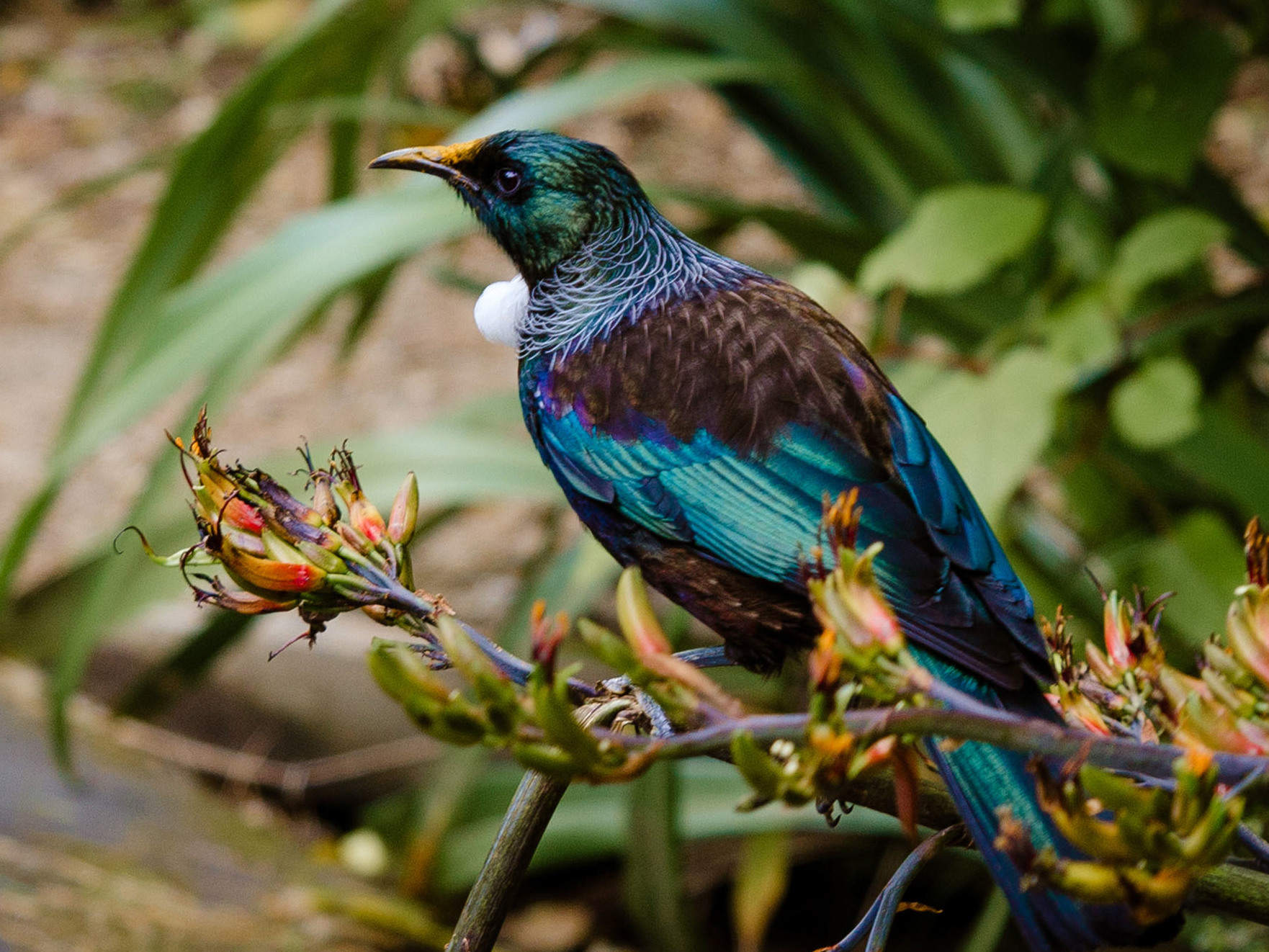Biodiversity, or biological diversity, describes the variety of life on earth, including plants, animals, bacteria, and fungi. Biodiversity provides critical life supporting systems that enable all organisms, including humans, to survive.
However, human activities are increasingly putting pressure on biodiversity and causing a rise in the rate of extinction of various species, including in Aotearoa New Zealand. For example, between 1996 and 2018, 40,800 hectares of indigenous forests, scrub, and shrublands, and 44,800 hectares of indigenous grasslands were converted to exotic grasslands, exotic forests, and urban uses.
This decline is largely due to pressures from human activities, including:
- introduced invasive species;
- drainage of wetlands and conversion of land to production uses;
- exploitation, including the historic hunting of marine mammals;
- pollution and leaching of nutrients from fertiliser and stock into waterways; and
- more frequent and damaging storm and flood events, increased fire risk, sea level rise, and ocean acidification as a result of climate change.
Why is biodiversity so important to Aotearoa New Zealand?
Much of the country’s biodiversity is indigenous, meaning that it is not found anywhere else in the world. Our unique biodiversity provides a range of life supporting functions, and is important for a number of reasons:
- It provides economic benefits: biodiversity is essential to clean air and water, the food that we grow, farm, catch, and hunt, and other primary production such as forestry, and tourism. Aotearoa New Zealand’s unique biodiversity is thought to give us a competitive advantage in primary production, exports, and tourism.
- It is of cultural importance: biodiversity is culturally important for Māori because te hauora o te koiora (the health of indigenous biodiversity), te hauora o te taonga (the health of taonga), and te hauora o te taiao (the health of the wider environment) are intrinsically linked to te hauora o te tangata (the health of the people).
- It is of social importance: biodiversity is generally important because many people spend time in, and have a special connection with, nature.
- It has health benefits: humans rely on ecosystem products and services, such as food, fuels, and medicine to survive. These are pre-requisites for human health and productive livelihoods, without which, human health would be significantly impacted.
Biodiversity loss is inherently connected to other environmental issues such as climate change. In addition to the pressures noted above, the changing climate causes species-specific changes, such as leaf-unfolding, bird migration, and egg-laying, which have flow on effects for other species. On the other hand, protecting biodiversity can also help us adapt to climate change because biodiversity provides stability and resilience to the fluctuations and disturbances caused by a changing climate.
Avoiding biodiversity loss is clearly a critical issue because of the wide-ranging economic, cultural, social, and health impacts that may result.
What is Aotearoa New Zealand doing to protect biodiversity?
At present, there are two key parts to our country’s strategy to protect and restore biodiversity: Te Mana o te Taiao (New Zealand’s indigenous biodiversity strategy) and the development of the National Policy Statement for Indigenous Biodiversity (NPS-IB).
Te Mana o te Taiao
Te Mana o te Taiao, New Zealand’s Biodiversity Strategy, was released in 2020. Te Mana o te Taiao sets a strategic direction for the protection, restoration, and sustainable use of biodiversity in Aotearoa New Zealand for the next 30 years.
Te Mana o te Taiao sets out the outcomes that it aims to achieve by 2050. The outcomes generally relate to thriving indigenous species, habitats, and ecosystems, prosperity and enriching lives through biodiversity, and Māori exercising their role as rangatira and kaitiaki.
An Implementation Plan was released in April 2020 alongside Te Mana o te Taiao. It sets out the various actions that have been, are being, and will be undertaken to achieve the goals and objectives in Te Mana o te Taiao. One of the actions in the Implementation Plan is to develop national direction for councils on their responsibilities for protecting and maintaining indigenous biodiversity. This national direction has come in the form of the National Policy Statement for Indigenous Biodiversity.
National Policy Statement for Indigenous Biodiversity (Draft NPS-IB)
The Ministry for the Environment consulted on an Exposure Draft of the NPS-IB (Draft NPS-IB) in June and July 2022 and it is expected for it to be finalised and gazetted.
At present, the Resource Management Act 1991 (RMA) is the main framework for maintaining and protecting biodiversity from adverse effects. However, the RMA relies on local authorities to implement rules relating to biodiversity and to ensure compliance with those rules. The Ministry for the Environment considers that the reliance on local authorities has led to an inconsistent and fragmented approach to protecting biodiversity throughout New Zealand. The Draft NPS-IB is intended to streamline the approach to protecting and restoring biodiversity.
The objective of the Draft NPS-IB is to protect, maintain, and restore indigenous biodiversity in a way that:
- recognises tangata whenua as kaitiaki, and people and communities as stewards, of indigenous biodiversity; and
- provides for the social, economic, and cultural wellbeing of people and communities, now and into the future.
At a practical level, the main mechanism in the Draft NPS-IB is the identification and protection of significant natural areas (SNAs). The Draft NPS-IB requires local authorities to undertake an assessment of the land in its district to identify areas of significant indigenous vegetation or significant habitat of indigenous fauna that qualify as SNAs. The criteria for SNAs is set out in the Draft NPS-IB and includes representativeness, diversity and pattern, rarity and distinctiveness, and ecological context.
Local authorities will then be required to make changes to their policy statements and plans to ensure that certain adverse effects on SNAs are avoided (e.g. loss of ecosystem representation and extent). Other adverse effects must be managed by applying the ‘effects management hierarchy’. The effects management hierarchy requires adverse effects of an activity to be avoided where practicable. If the adverse effects cannot be avoided, they must be minimised, remedied, offset, or compensated. The Draft NPS-IB also includes specific provisions for managing adverse effects on SNAs on Māori land, geothermal SNAs, and SNAs in plantation forestry and for managing the adverse effects from existing activities and other activities such as infrastructure and mineral extraction, where those activities provide a national or regional public benefit.
The Draft NPS-IB provides that local authorities must notify changes to their plans and policy statements to give effect to the SNA provisions of the NPS-IB within five years of commencement of the NPSIB. Local authorities must notify changes to their plans and policy statements to give effect to the rest of the NPS-IB within eight years. By the time local authorities are required to amend their plans under NPS-IB, we anticipate that New Zealand will be transitioning to its new resource management system and that the NPS IB will be incorporated into the proposed National Planning Framework under the new resource management system.
Can we do more to protect biodiversity in Aotearoa New Zealand?
Due to the critical nature of this issue, there is an opportunity for New Zealand to explore further means to fulfil its biodiversity strategy. The Taskforce on Nature-Related Financial Disclosures (TNFD) is an international initiative launched in 2022 to develop and deliver a risk management and disclosure framework for organisations to report and act on nature-related risks and opportunities, with a view to shift away from nature-negative outcomes and toward nature-positive outcomes. This is an interesting development that could be further explored in New Zealand as a tool to enhance the restoration and protection of biodiversity.
The TNFD consists of 34 individual taskforce members representing financial institutions, corporates, and market service providers with US$19.4 trillion in assets, including Bank of America, BlackRock, GSK, and Nestlé. The TNFD is also supported by public sector institutions, science and information organisations, and other interested groups. ANZ and Chartered Accountants Australia and New Zealand are two of the New Zealand related entities on the TNFD Forum, which is made up of over 700 organisations that are helping to develop the TNFD framework.
The TNFD recognises that nature loss poses a major risk to business with more than half of world’s economic output moderately or highly dependent on the natural environment. It aims to provide information to financial institutions and companies to allow those organisations to incorporate nature-related risks and opportunities into their strategic planning, risk management, and asset allocation decisions.
The TNFD framework includes four pillars:
- Governance: how nature-related risks and opportunities are overseen by boards and assessed by management to evaluate whether appropriate attention is given to those risks;
- Strategy: the actual and potential impacts of nature-related risks and opportunities on business, strategy and financial planning over the short, medium, and long term to inform expectations of future performance;
- Risk management: how the organisation identifies, assesses, and manages nature-related risks and opportunities; and
- Metrics and targets: the business’ measurement and monitoring approach allowing for the assessment of potential risk-adjusted returns, exposure, adoption, and financial obligations relating to nature-related risks and opportunities.
The TNFD framework is modelled on the Taskforce for Climate-related Financial Disclosures (TCFD) framework which was developed to improve and increase reporting of climate-related financial information.
In 2021, Aotearoa New Zealand passed legislation aligned with TCFD that requires banks, managers of investment schemes, insurers, and listed entities that meet certain thresholds to disclose how climate change relates to their business.
It is possible that similar legislation for nature-related disclosures could be introduced in Aotearoa New Zealand in the future. Legislation would likely require companies to report on nature-related risk and opportunities, allowing stakeholders to hold those companies to account for any negative impacts on nature and biodiversity. This would likely incentivise positive change.
Commentators are encouraging businesses to quickly get to terms with the principles of the TNFD to boost stakeholder confidence and to manage the potential regulatory obligations if they arise in the future. We may see the TNFD included as a Tūāpapa in Te Mana o te Taiao Implementation Plans in the future.
This article was co-authored by Henry Sullivan, a Solicitor in our Environment Law team.


